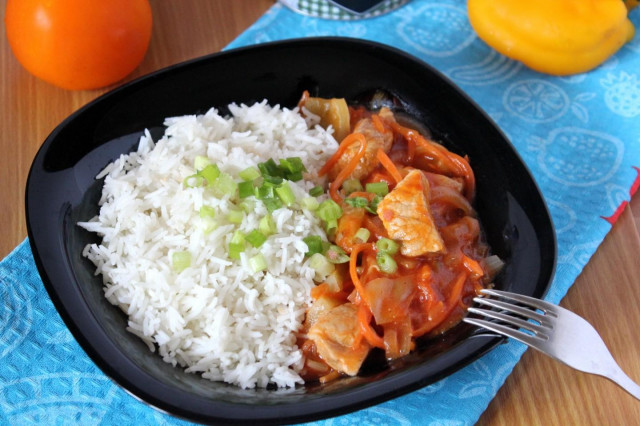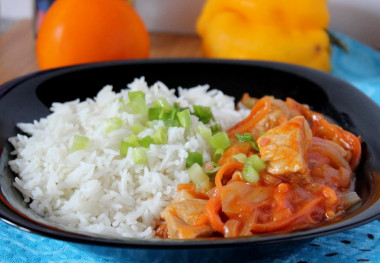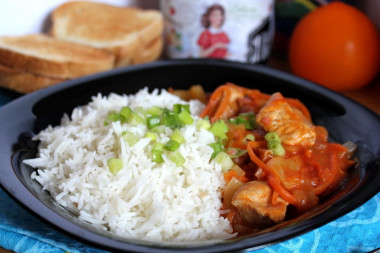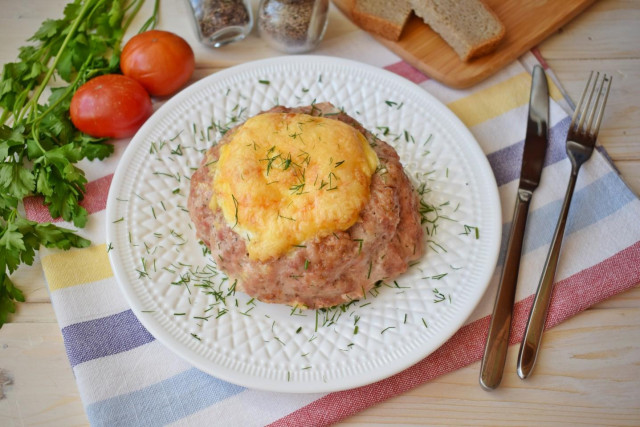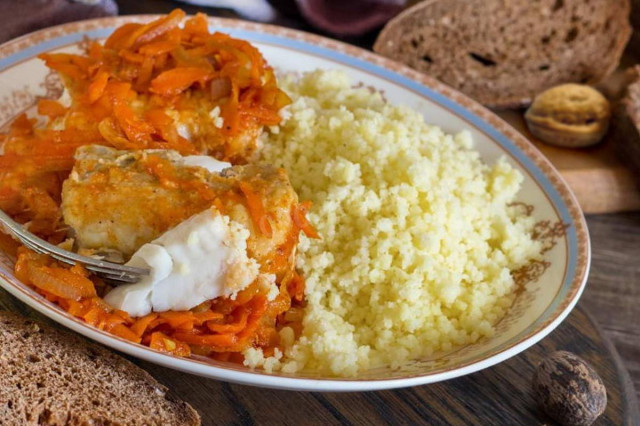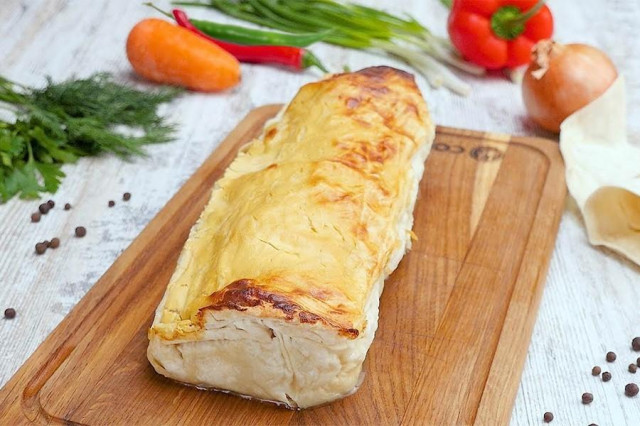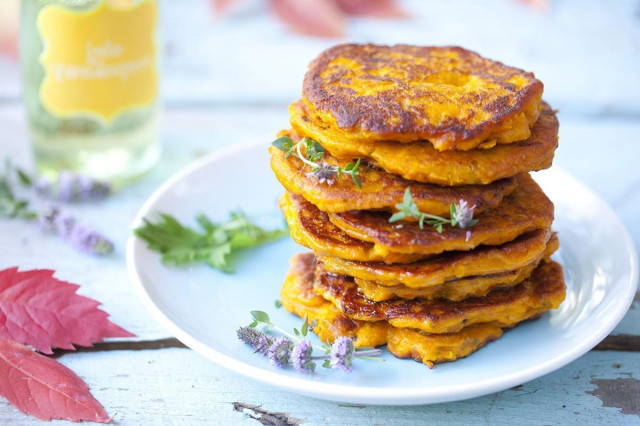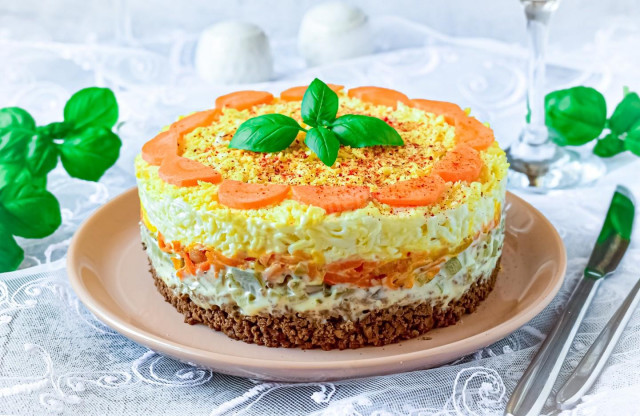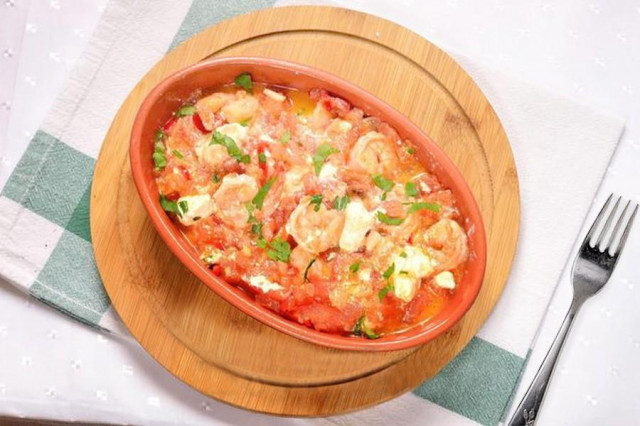Composition / ingredients
Cooking method
The cooking process:
1. Rice is washed several times under running water. Then put the rice in a saucepan and pour water 1:1.5. Salt to taste. And we put it on a slow fire. When the water boils, the rice should not be completely ready. That's what we need. Turn off the heat and leave the rice under a closed lid. And it's even better to wrap the pan in something warm. Thus, the rice will reach and remain crumbly.
2. While the rice is being prepared, we will prepare goulash.
To do this, first wash the meat and cut it into medium cubes.
3. Put the meat on a preheated frying pan with vegetable oil pre-poured there.
4. While the pork is frying over medium heat, prepare the vegetables.
5. Peel the onion and cut it into half rings. The onion must be taken white.
6. Wash the pepper, peel the seeds and cut into large pieces.
7. After the meat is lightly fried and the juice is released, you can add onions, peppers and Korean carrots. You can take a regular carrot and cut it into cubes.
Let them lightly fry over medium heat. But not for long, so that the juice of the meat does not burn.
8. Now add a little water and let the pork and vegetables simmer for about 10 minutes.
9. Tomato paste can be stirred in a small amount of water in a small bowl and put a spoonful of flour there. I put millet. You can put any one you have. Stir well until smooth consistency.
10. We try the meat for softness. It should be almost ready. Now you can add the tomato mixture to the pan and mix everything well. Add salt to taste. Due to flour, the sauce will thicken. Therefore, if necessary, add a little more water so that the sauce is not too thick, but also not watery.
Let the goulash simmer for another 10 minutes.
If the meat is soft and all the vegetables are put out, then our goulash is ready.
I took basmati rice. It is considered very useful. But you can also take long-grain rice, steamed rice, in general, those varieties that remain crumbly after cooking.
It is better to fry in oil, which contains less unsaturated omega fatty acids. For example, olive or coconut oil is not refined. Then your dish will be more useful.
You can serve the dish by putting goulash with sauce on a plate on one side, and rice on the other side. You can also put goulash on top of rice, or the third option: mix rice with goulash and serve in this form. Try it however you like.
Bon appetit!
Calorie content of the products possible in the composition of the dish
- Pork fat - 333 kcal/100g
- Pork meat - 357 kcal/100g
- Pork - low-fat roast - 184 kcal/100g
- Pork chop on a bone - 537 kcal/100g
- Pork - schnitzel - 352 kcal/100g
- Pork Shoulder - 593 kcal/100g
- Boar's leg - 113 kcal/100g
- Pork - 259 kcal/100g
- Sweet pepper - 27 kcal/100g
- Whole durum wheat flour fortified - 333 kcal/100g
- Whole durum wheat flour universal - 364 kcal/100g
- Flour krupchatka - 348 kcal/100g
- Flour - 325 kcal/100g
- Vegetable oil - 873 kcal/100g
- Tomato paste - 28 kcal/100g
- Onion - 41 kcal/100g
- Sea salt - 0 kcal/100g
- Basmati rice - 347 kcal/100g
- Korean carrots - 134 kcal/100g

